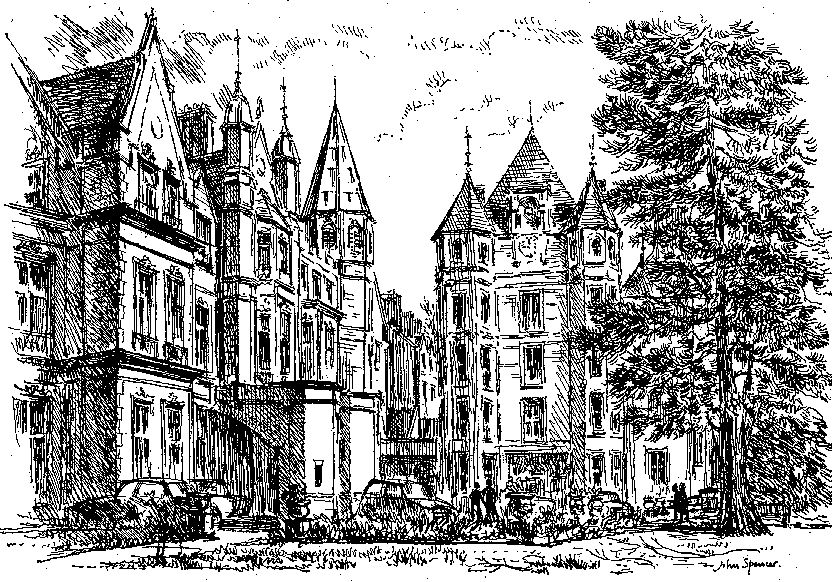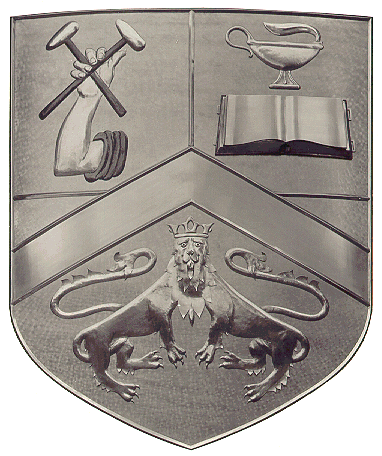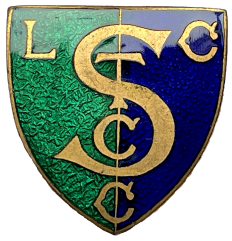


Shoreditch Training College, later to become Shoreditch College of Education, was unique as a teacher training institution in its focus on handicraft. This concentration on handicraft was developed with a deeper and wider purpose than may at first be appreciated. Handicraft was conceived of and taught as a means of offering a broad and liberal education to children in secondary schools; a medium for instilling and developing in children an integrity of purpose and an appreciation and understanding of good design and craftsmanship in all things. It was seen as providing children with channels for emotional, aesthetic, spiritual and intellectual development which would better enable them to meet with confidence the needs and challenges of a rapidly changing society.
Shoreditch Training College (STC) had its origins during the early 1900s in a scheme that was brought to being under the aegis of the London County Council, and whose object was to improve the standard of teaching in London's Manual Training Centres, at that time staffed by selected artisans from industry. The new scheme started modestly with 10 boys aged 14-15 who were selected by examination and offered 4-year scholarships to become pupil teachers in Handicraft. The course covered academic work, educational method, and teaching practice, and with particular emphasis on woodwork, metalwork, modelling and art. Qualification to teach was obtained on passing the City and Guilds Handicraft Teachers Examination.
In 1907 the scheme moved from its original home in a South London school to become a department of the Shoreditch Technical Institute on the doorstep of the City of London in Pitfield Street, Hoxton, N1. The new department proved so successful that after World War I, in 1919, the Board of Education gave it the status of a training college. By 1930 it had separated from the Shoreditch Technical Institute, to become affiliated with the University of London's Training College Delegacy and now being allowed to appoint its own staff. By the outbreak of World War II numbers had risen to 150 students taking a 2-year course either in the College or its Preparatory Department. Soon after the war, with the general expansion in teacher training, numbers had risen to 300.
The College had now outgrown its accommodation at Pitfield Street and a move was necessary. In 1951 Shoreditch Training College moved out of London altogether to a new home on a much larger site in a semi-rural location at Cooper's Hill, Englefield Green, Surrey, although the College continued to be funded by the London County Council.
The property at Cooper's Hill was originally a private residence, but it was first used for educational purposes when it was acquired in the 1870s as the future home of the Royal Indian Engineering College whose work was to train engineers, telegraphists and forestry officers for the public services in India, Burma and elsewhere. The RIEC moved out in 1906 and the buildings remained unoccupied for a while before becoming a private residence again. The site was acquired just before World War II by the London County Council which opened a temporary Emergency Training College there in 1946, and the closure of this college in 1951 provided the opportunity for a home large enough to accommodate STC's growing numbers of students. With some 60 acres of beautiful grounds and a situation on a hill overlooking the Thames, Runnymede and Windsor Castle the new site was in great contrast to the cramped inner city site at Pitfield Street.
Once at Cooper's Hill the 2 year preparatory course was disbanded and STC became a residential college for the first time. Students now came from all over Britain and the countries of the Commonwealth. Further expansion followed with student numbers reaching 550 by 1964 (including a number of qualified teachers taking a supplementary course in handicraft). Soon afterwards STC's first B.Ed degree course was validated. However there were soon worrying developments. Shoreditch College of Education, as it had become, was by now one of the leading teacher training institutions in the field of Craft, Design & Technology (CDT). It was always ready to adapt and address the new, but after the expansion in teacher training a contraction followed and college closures were threatened, including the closure of Shoreditch. The only way in which any part of the college's work might be carried forward appeared to be through an arranged marriage with Brunel University. With the merger with Brunel in 1980 came a different focus and craft-design-technology gave way to design-technology, and with it was lost the emphasis on the teaching of handicraft based in the wider ideals of a broadly based liberal education.
Nevertheless the record of achievements of STC and its former students stands both in education and in other fields. As well as provoking fond memories, the College had a wider impact on education in many countries of the Commonwealth as well as in Britain and it is hoped these pages will go some way towards marking this. Perhaps also it may provide an additional stimulus for thought at a time when (when is it not?) the role of teachers and education in the UK is under fervent discussion. [J.R. Williams]
THE SHOREDITCH TRAINING COLLEGE
COAT OF ARMS

The coat of arms reproduced above and carved on the Memorial Lectern which is being dedicated in July 1948 is to be interpreted as follows:
The top right-hand quarter of the shield, known as the dexter quarter (because it protects the right arm) contains an arm bent, with the sleeve rolled up. It is the right arm, and the hand is facing the spectator grasping two crossed goldsmith's hammers. The arm denotes the power to work, and the hammers suggest that the work is craftsmanship.
The left-hand division, known as the sinister quarter, contains an open book surmounted by a burning lamp. These symbols denote learning and wisdom. The lamp is not placed upon a closed book, but stands above the open page.
The shield is divided by a chevron, the lower half being filled with the coat of arms of the Borough of Shoreditch. Although there seems to be no authority for these arms according to the College of Heralds, they are described in the "Book of Public Arms" by Fox Davies as being "a gold bicorporated lion ducally crowned, the crown of blue, the head in chief facing the spectator upon a red background." This description is made in proper heraldic idiom, but there appear to be some curious mistakes in the description. In heraldry, a lion is always drawn side view, whereas it becomes a leopard when the head is drawn full-face. Heraldically - and possibly to ensure easy recognition by supporters on the field of battle - the significant thing is whether the head is full-face or side-face, and the heraldic terms "lion" or "leopard" are used to denote this fact.
Heraldry insists on proprieties of form and also of colour. The colouring is known technically as blazoning. In the Shoreditch coat of arms the "main field" holds the bicorporated lions of John de Northampton (Lord Mayor of London, 1381 - 1382). The statement of the correct blazoning of the Shoreditch Training College coat of arms is as follows:
"Gules, a bicorporated leopard rampant, counter-rampant, coward, or; ducally crowned, azure; chief per pale verte and azure; in the dexter, a dexter arm embowed, proper, vested at the shoulder, argent, grasping two goldsmith's hammers in saltire, proper; in the sinister, an open book, argent, garnished, surmounted by an ancient lamp, argent, flame, or; over all a chevron, argent."
In interpretation of the above, note that the colours verte (green) and azure (blue) are chosen for the dexter and sinister fields, because green is the colour which suggests trees - the materials used by wood craftsmen, and azure is the colour that suggests learning. Other words used in the formal description are gules - red; or - gold; pale - the perpendicular division; proper - the natural colouring; saltire - crossed; garnished - gold-edged; coward - having the tail drawn in between the legs; chief - the head or top part of the shield; vested - clothed, in this case with a shirt; embowed - bent. [author unknown]
(see News and Views for new information concerning the maker of the shield)

lapel pin
![]() Royal Indian Engineering College
Royal Indian Engineering College
Home | History | Staff | Photos | Lost Touch? | News | Links | Contact | Site Map